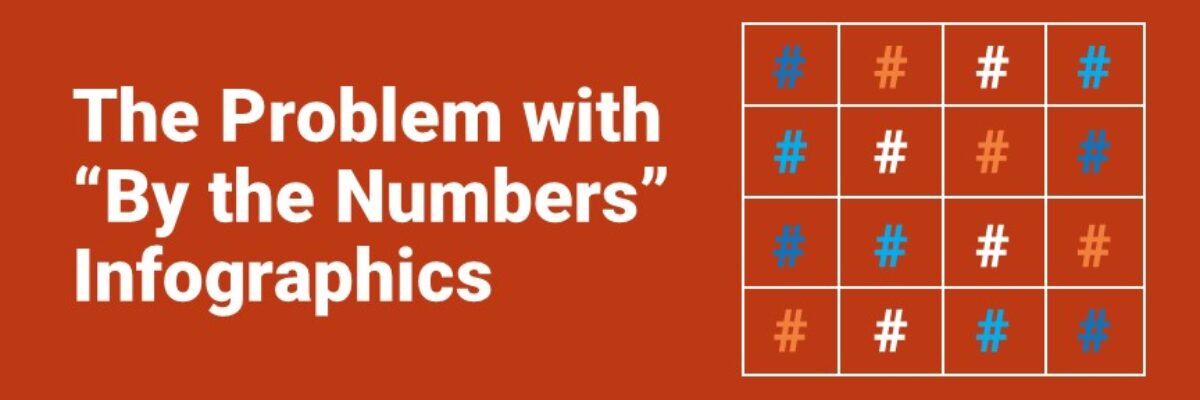The Problem with “By the Numbers” Infographics
My heart breaks every time I see an infographic called By the Numbers. It’s as if someone in leadership said “Let’s report ‘our numbers’ this year – and put it in one of those infographics.” Someone in Communications got on board because they believe infographics grab attention. And some poor designer was tasked with trying to make some unrelated random bullet points into something cohesive. We end up with data pukes like this:

This is just a table in fancy fonts and colors.
And tables are really difficult for our brains to process. We don’t do so well trying to make meaning from random numbers. It is too many disparate bits that haven’t been pulled together into anything cohesive. Which puts the burden of cohesion on our audience’s working memory. Working memory just isn’t that strong.
Cognitively, we can’t do much with these By the Numbers infographics.
Even if this eye candy makes someone stop scrolling through Facebook long enough to rest their gaze on a single square, there isn’t much there to hook into. 49 podcasts…. uh, ok……… is that a lot? A little? Should I be impressed? How many did you have last year? How many did your competitor have?
Isolated numbers lack context. Context is how we get meaning. And that’s the thing – people are meaning makers.
We get context by adding more data points. More data points means we need graphs. Let me say it again for the folks in the back: WE NEED GRAPHS.
Context typically comes in three methods: Comparison against your own historical performance, comparison to internal goals, and comparison to external benchmarks.
1. Comparison Against Your History
This is low-hanging fruit for NPR’s number of podcasts – just show us the growth in podcasts over time as a line chart. I bet the line goes up a lot! Easy!
2. Comparison to an Internal Goal

In this fancy table from CDC, they no doubt have internal goals that could be added for more context and a deeper (but still quick) communication. Oh, you trained 3,758 emergency responders? Ok. What was your goal or target for the year? Add that data as an overlapping bar (just one option) and then readers can make quicker meaning.
3. Comparison to an External Benchmark

In these Stats, by one of my favorite magazines Bust, I realize they don’t have a lot of real estate to work with. But there’s an opportunity for a tiny graph in each of these sections. 15 states passed workplace harassment laws. Should I be cheering? I need the context. And in the case, it is easy to add context because there is a natural external benchmark (ALL 50 STATES PLUS TERRITORIES). I’ll even take a pie chart of this data.
Look, I’ve been there. I totally over-relied on this data puke style of infographic when I was first getting started. It’s just that it’s now time to evolve.
Leadership, Communications, and Design all need to align around adding meaningful context because context is where the data stories thrive.


